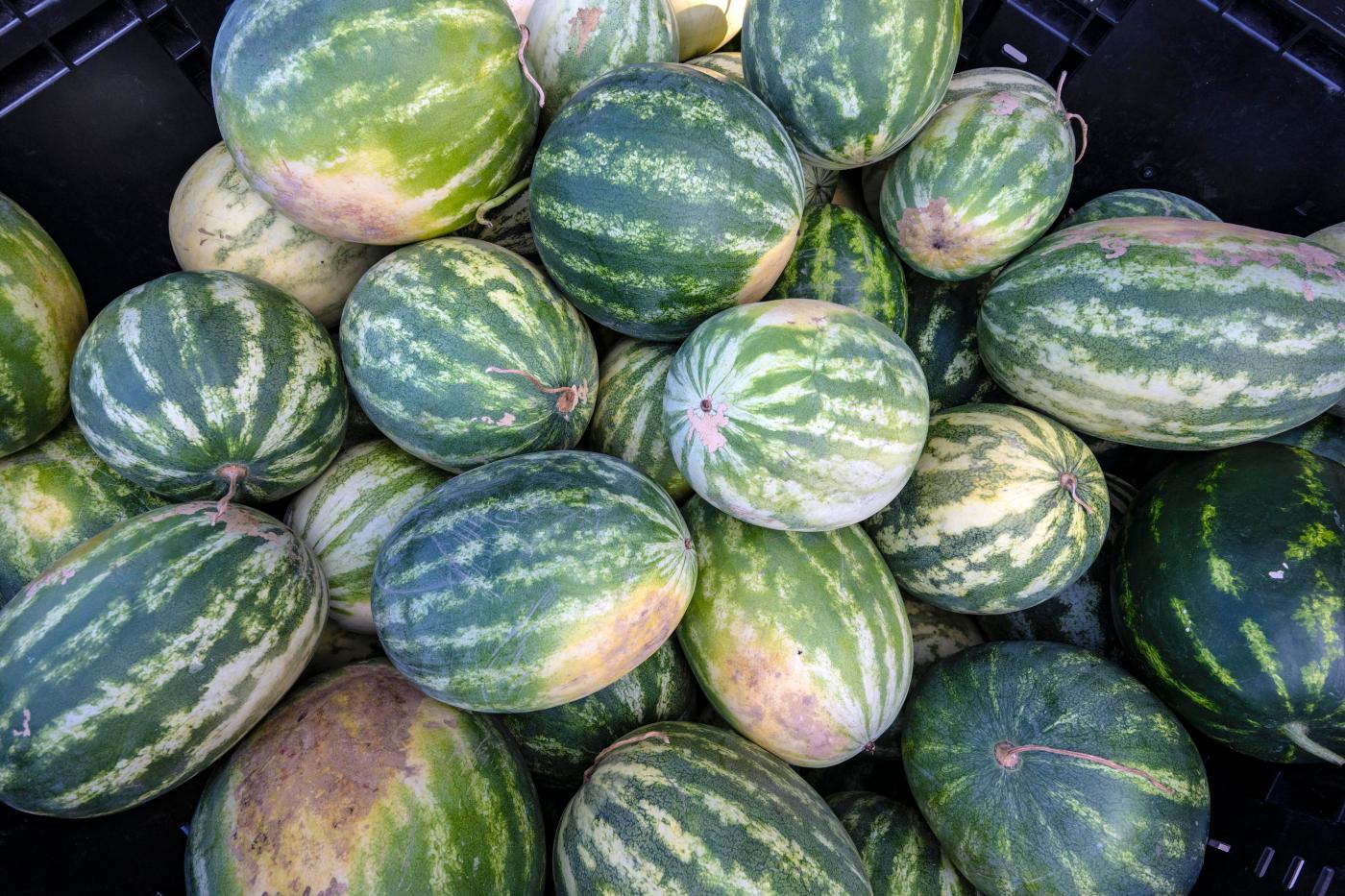It’s Tuesday afternoon at the Placentia Farmers Market, and my shopping bag runneth over!
Here you find much more than produce: I tried Bonjour Kefir Yogurt, which Jasmine told me has no added sugars, dyes or preservatives. At Power In Herbs, Daniel showed me Golden Mix, an ancient anti-inflammatory remedy said to help the body absorb turmeric. Brother Products and Baba Foods sell the Middle Eastern sides I crave like hummus, baba ganoush and tzatziki.
At Bonita Farms, I picked up gorgeous strawberries at $5 a basket and the season’s first cherries at G Farms. I spotted several varieties of kale at Chavez Farms and grabbed the curly kale, but I’m curious about the other varieties.
When it comes to produce, my go-to source for information is Robert Schueller, director of public relations for Melissa’s Produce, the largest distributor of specialty produce in the United States.
“Although there are several dozen varieties of kale out there, there are three main ones anyone can find at their local supermarket,” he told me. “Kale is actually a form of cabbage. It’s one of the most highly nutritious vegetables, with powerful antioxidant and anti-inflammatory properties. Curly kale, with its frilly leaves, is the most common variety to find, 75% of the time.
“Lacinato Kale – aka black, aka dino, aka Tuscan – is the large leaf variety with dark grey bluish-green leaves, the best tasting with no center core stem,” he added. “White and purple flowering kale – aka salad savoy – has curly colorful leaves, green to white with purple in color, no center core stem, with a more tender flavor.”
Cara Mangini’s kale and watermelon panzanella calls for curly kale.
“The dish is a take on both a classic Italian tomato bread salad and a Mediterranean style watermelon-feta salad with all the sweet, sour, crispy, salty, and creamy notes to elevate it,” she writes.
I caught Mangini on YouTube, sponsored by Melissa’s Produce, demonstrating three recipes from “The Vegetable Eater,” a lemony rainbow carrot couscous salad, avocado toast with turmeric nut-seed mix and a sheet-pan cauliflower marbella with polenta, using Melissa’s tubed polenta slices — so convenient.
“This book is really designed for every eater at the table,” Mangini said. “My goal is to have you really find joy in putting vegetables at the center of the plate.”
Fullerton’s Judy Bart Kancigor is the author of “Cooking Jewish” and “The Perfect Passover Cookbook.” Her website is cookingjewish.com.
KALE AND WATERMELON PANZANELLA
From “The Vegetable Eater” by Cara Mangini
Ingredients:
• 4 cups torn bite-size crusty bread, such as ciabatta (extra hard crust removed)
• 2 tablespoons plus 1/4 cup extra-virgin olive oil
• Fine sea salt
• 1/2 red onion, shaved or very thinly sliced
• 3 tablespoons freshly squeezed lime juice (from 1 to 2 limes)
• 1 tablespoon balsamic vinegar
• 3/4 teaspoon sugar or maple syrup
• 3 packed cups stemmed and chopped curly kale (about half a bunch)
• 4 heaping cups watermelon
• 3 tablespoons toasted pitas
• 1 cup freshly crumbled feta cheese
• Freshly ground black pepper
• Flaky sea salt for finishing (optional)
Method:
1. Croutons: Heat oven to 375 degrees with rack in middle position. Place bread on sheet pan and toss with 2 tablespoons (or more) oil and a generous pinch of salt until well coated. Spread out bread and bake until golden and crisp, 9 to 12 minutes. Do not over toast or burn; croutons will continue to crisp as they cool.
2. Pickled onions: Combine onion, pinch fine sea salt, and 2 tablespoons lime juice and let stand, turning occasionally, while you prepare rest of salad.
3. Dressing: In small bowl, whisk together remaining 1 tablespoon lime juice, the balsamic vinegar, the sugar, and 1/4 teaspoon fine sea salt. Stream in the 1/4 cup oil, whisking until emulsified.
4. Assembly: Combine kale in large serving bowl with 2 tablespoons of the dressing. Toss together or massage dressing into kale until well coated. Pile watermelon on top and add 3/4 each of pickled onions, pepitas, and feta. Drizzle with 1 tablespoon of the dressing and toss the watermelon, onions, pepitas and feta and combine evenly – don’t actively combine with kale at first.
5. Add about 3/4 of the croutons and another 1 tablespoon of the dressing. Now toss everything in with kale to combine. Sprinkle with remaining pepitas and feta. Add remaining onion if you wish. Generously season with black pepper and, if using, light sprinkling of flaky sea salt. Adjust seasoning and dressing to taste; top with remaining croutons.
